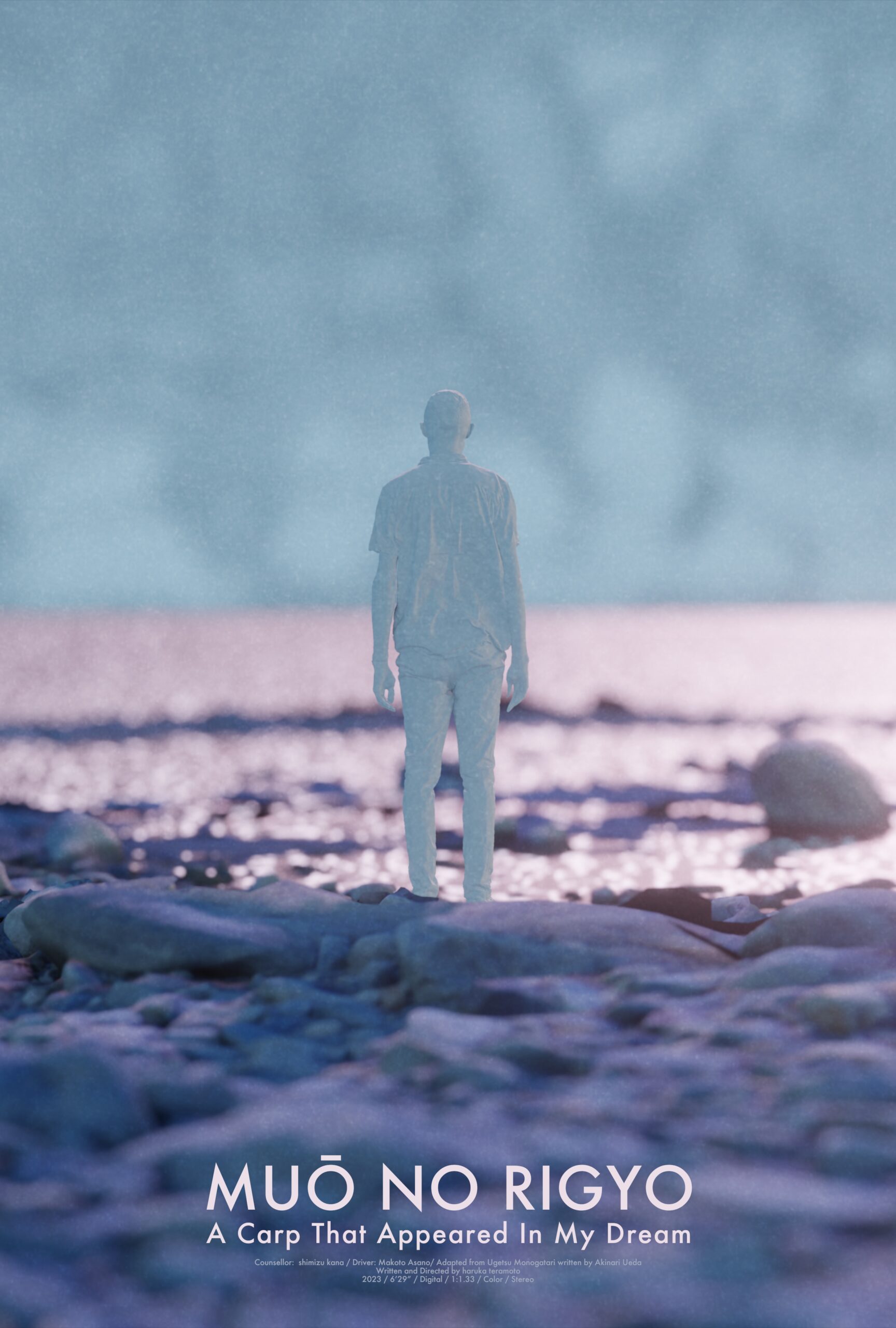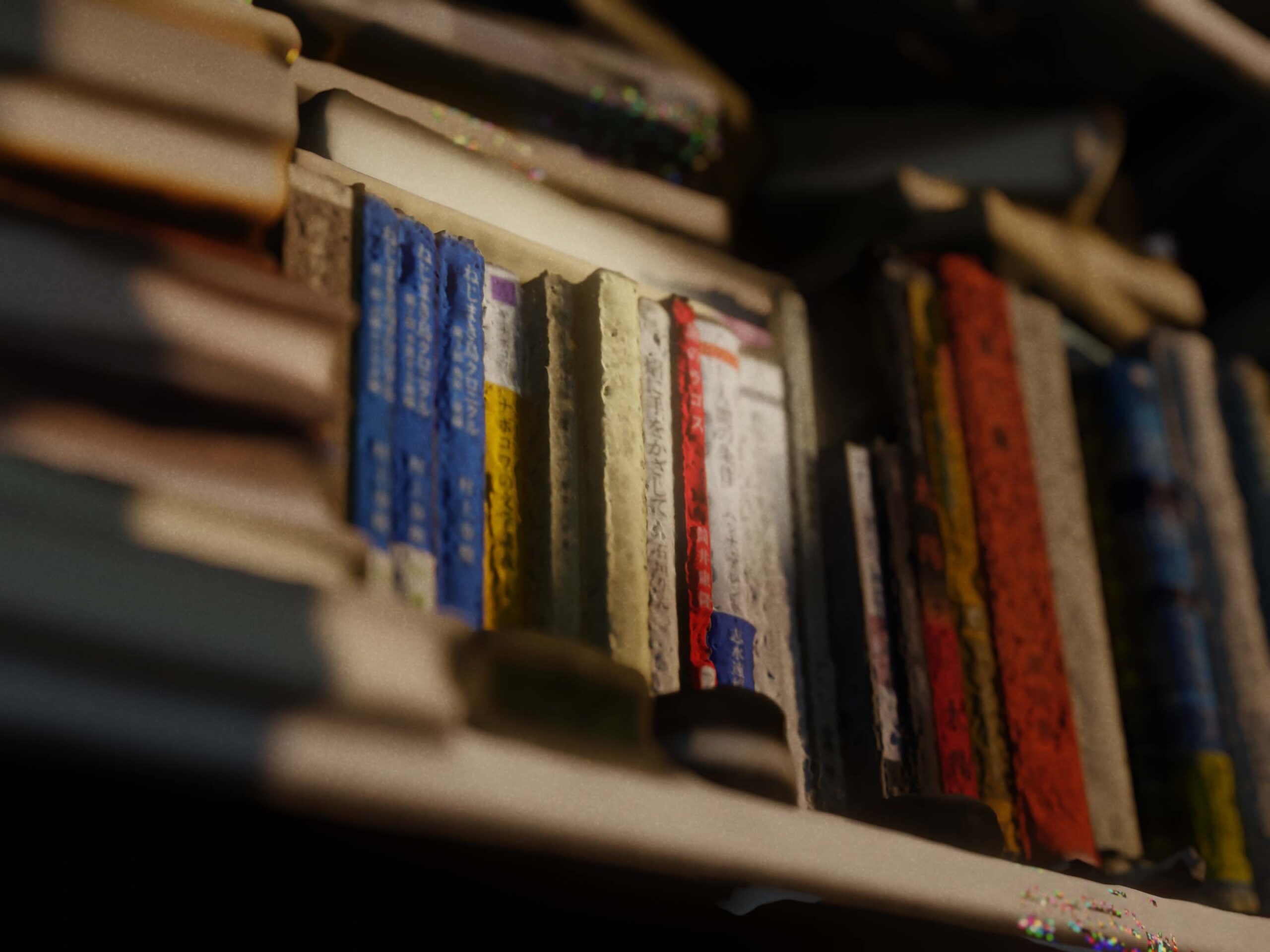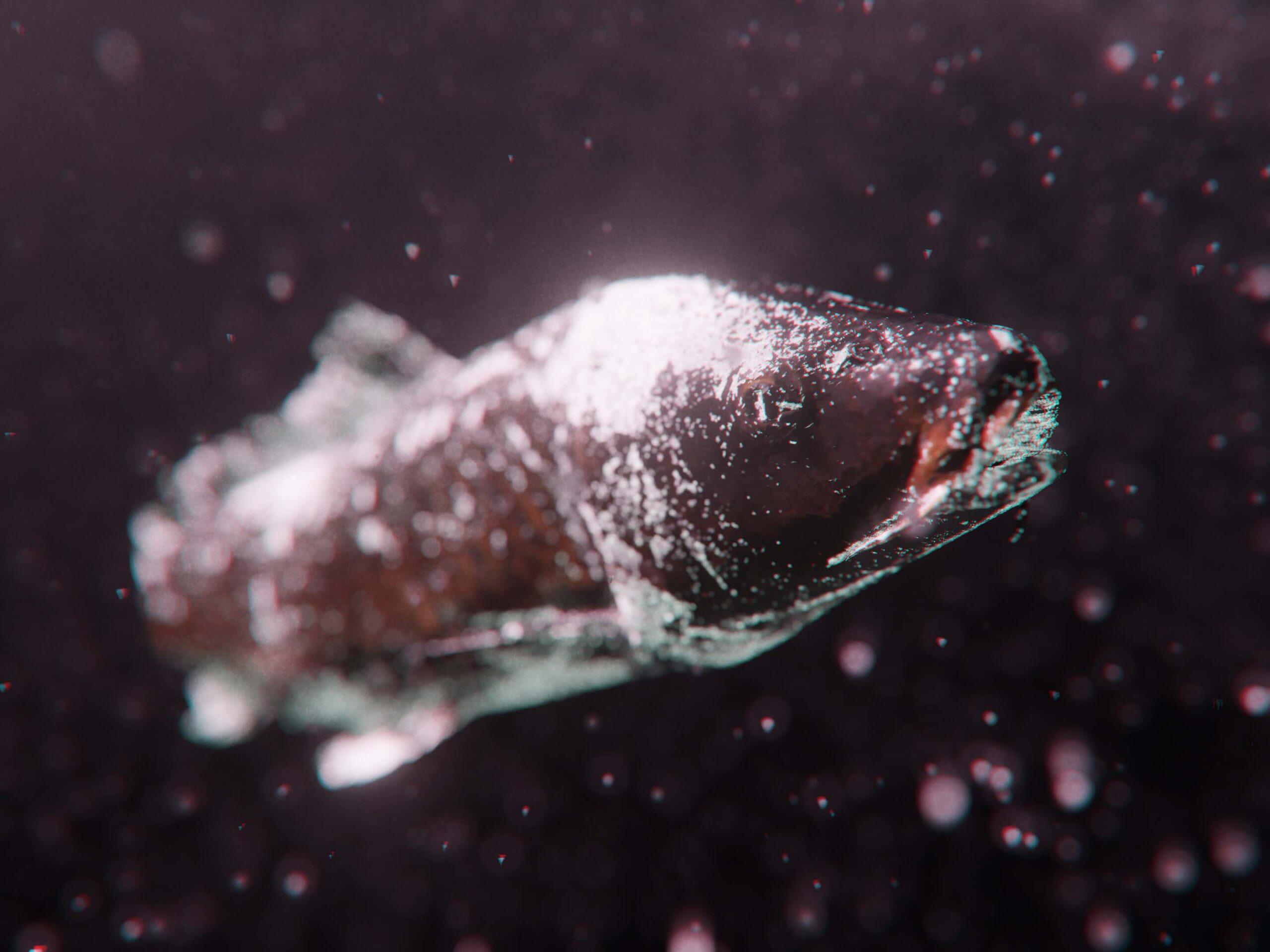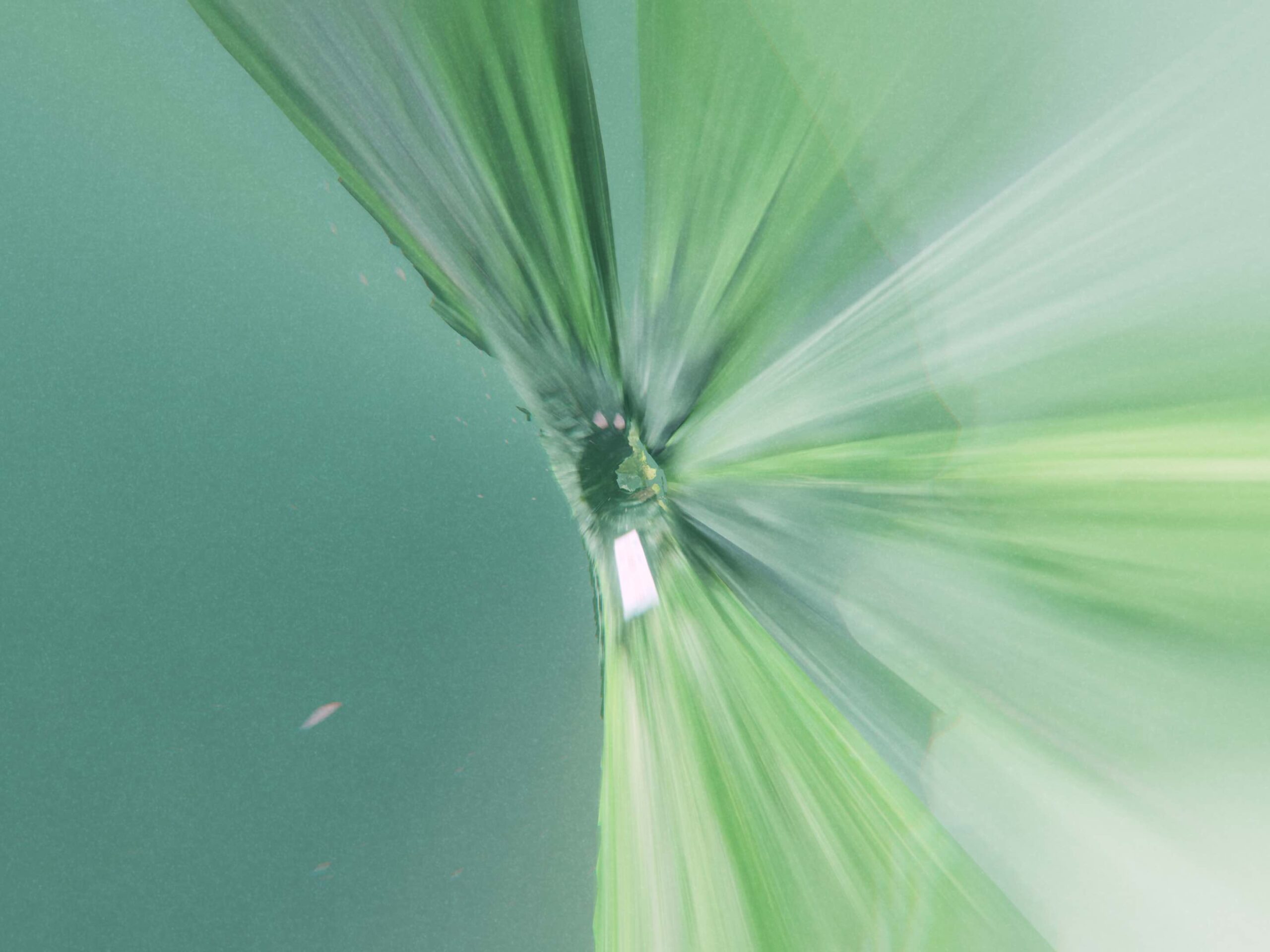夢応の鯉魚 | A Carp That Appeared In My Dream
A man turns into a carp in his dream and gets caught by himself.
This film is adapted from “Muō no Rigyo” from ”Ugetsu Monogatari” by Akinari Ueda, a magic-realistic tales written in Japan’s Edo period, also known as the original story of “Ugetsu” by Kenji Mizoguchi.
I paradoxically emphasized the subtle “kai’i (怪異)” – a Japanese word indicates something mysterious, weird, orphic and sometimes dangerous – in it by reconstructing the storyline to be rational and interpretable.
I used Photogrammetry to obtain the unique bumpy texture and make the weird scenery in a dream.
本作品は、上田秋成著『雨月物語』の一篇「夢応(むおう)の鯉魚(りぎょ)」の物語を改変し、フォトグラメトリ技術を用いて3Dアニメーションとして映像化したものです。
怪異小説と呼ばれるジャンルの物語では、登場する者達が、分別をわきまえた現代人の目から見ると非合理的にも思えるような行動をとります。しかし、一旦そのような合理的なバイアスを外して見れば、彼らは各々の独自の道理に沿った行動をしていて、一見不条理に思えるような出来事も、その有様が人間の畏れ/欲望/嫉妬/哀れなどの感情をよく写しているように思えます。
『雨月物語』はそのような不条理な怪異によって満ちていますが、「夢応の鯉魚」はその中でも最も軽快で、気が抜けていて、ドラマチックなあやしさの薄い一篇であると思われます。とはいえ、それでもなお「夢応の鯉魚」は不条理です。本作品では、舞台を現代に、主人公を影の薄い人物に換え、物語をできる限り合理的に解釈できるように大幅に改変することで、それでもなお濾しきれない残滓のような現代の怪異を逆説的に提示しようと試みました。たとえ、本作品の主人公のヴィジョンが臨死体験でも何でもなく単なる夢で、その根源がよく釣りに行って鯉を見ていたというだけのことで、檀家が鯉を釣ってきたというような知るはずのないことを知らず、泳ぐ鯉の絵を描かなかったとしても、「夢応の鯉魚」という物語の魂は消えず、夢の話にはどこか幽かなあやしさが残るのではないかと考えたのです。
フォトグラメトリ(Photogrammetry)とは、写真画像の視差から、対象の三次元的な情報(座標と色)と、カメラの相対位置・角度を推測(して、点群やメッシュ3Dモデルを生成)する技術のことです。
具体的には、任意の場所や物をあらゆる角度からぐるぐると写真で撮影し、専用のソフトウェアを用いることでカメラの位置と傾きを推測し、疎な点群、密な点群、メッシュ、テクスチャと順に生成し、作中で使用する3Dモデルを得ました。
写真画像を解析して静的な対象上の点を推測するため、水・ガラス・金属などの複雑な反射や透過を伴う素材や、少しでも動きのある物体には向いていません。また、光が激しく変化したり、強い影の出る条件下も苦手としています。測量や地形調査等に用いられることで発展した技術であるため、小さな物体のディテイルの再現度においては優れているとは言い難く、出力された3Dモデルには、ぼこぼこした特有の立体感が出ます。
本作品では、このある意味不完全な技術を用いて得た独特の質感の3Dモデルを使うことで、夢の中のどこかあやしいような情景を作り出そうと試みました。
# Synopsis of the base story “Muō no Rigyo”
Once upon a time, there was a monk who was an excellent painter. He would buy fish caught by fishermen, release them into the river, and paint the them. He even painted the carp he saw in his dreams and called them “Muō no Rigyo” (A Carp That Appeared in My Dream).
One day, He fell ill and died. Three days later, He revived and visited one of his parishioners, where he tells the following story:
“Not knowing I was dead, I wandered out into the cove and swam in the water. As I was thinking that I was not as free as a fish, a great fish and a messenger of the sea god came and gave me a carp’s robe. I, now a golden carp, cruised around the Lake Biwa and felt dreamy.
Suddenly hungry, I bite the bait from a fishing line dropped by one of my parishioners and am caught. ‘How dare you try to harm a disciple of the Buddha!’ I shouted, but to no avail. I awoke just as I thought I was about to be cut down.”
When people heard this story, they wondered much, as they were just about to eat the carp they had caught, and they abandoned the carp dish.
The monk lived until the end of his life. It is said that the carp he painted started swimming when someone put it in the water.
# 原作のあらすじ
昔、三井寺に絵の上手な僧がいた。漁師の捕らえた魚を買い取り、川に放ってその姿を描くような人物で、夢で見た鯉を絵にしては「夢応の鯉魚」と呼んでいた。ある時、僧は病に伏せ息絶えてしまう。3日後、弟子たちが見守っているなかで僧は生き返り、ある檀家の家を訪ねると次のようなことを語る。
僧は自分の死んだことも知らず、入り江に彷徨い出た。ふらふらと水を浴びて泳ぎ回ってみたが、魚の自由さには及ばない―と思っていると、大魚と海神の使いがやって来て、僧に鯉の衣を授ける。金色の鯉になった僧は、琵琶湖の風光を巡り夢心地になる。急に腹が減った僧は、檀家の垂れる釣り糸の餌を口にして釣り上げられてしまう。「仏弟子を害する例やある。我を助けよ」の叫びも虚しく、ついに捌かれると思ったところで目が醒めた。
この話を聞いた檀家の人々は、ちょうど釣ってきた鯉を食べようと思っていたこともあって大いに不思議がり、鯉のなますを棄てる。僧はそのあと天寿を全うするまで生きた。僧の描いた鯉の絵は水に着けると泳ぎだしたという。
MUŌ NO RIGYO
©︎haruka teramoto 2023
Counsellor: shimizu kana
Driver: Makoto Asano
Adapted from Ugetsu Monogatari written by Akinari Ueda
Directed by haruka teramoto
Model of A Man created by modifying “Kyle”(toolsbyhollie, 2022, (Licensed under CC BY 4.0))
Model of A Carp created by modifying “Common Carp, Cyprinus carpio”(ffish.asia / floraZia.com, 2022, (Licensed under CC BY 4.0))
Model of A Butterfly created by modifying “Lemon Emigrant, Catopsilia pomona”(ffish.asia / floraZia.com, 2022, (Licensed under CC BY 4.0))
6’29”, 4:3, 2023




